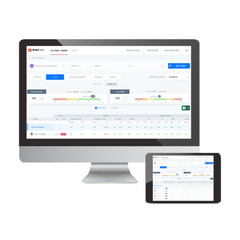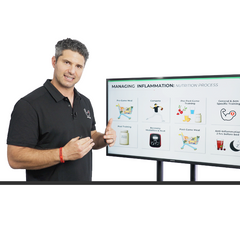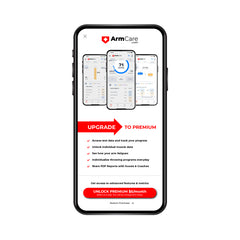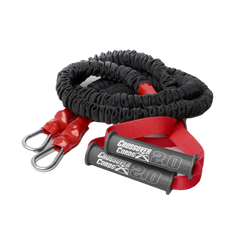Quality Reps Cash Checks. Master The Basics & Maximize Every Rep.
As a precursor to the Certified Pitching Biomechanist Certification, athletes need to learn motor patterns in training during the developmental periods of their athletic careers during the peak height velocity stage of life (ages 12-15 years old). After mastering foundational movement patterns, the next stage is strength and coordination training, blending arm strength dynamometry and 3D motion capture to optimize athletes’ motor preferences in competition.
Athletic development suffers if it can only be taught in isolated environments, such as having to go to a gym to participate in programming. Although recommended, the added expense of paying for strength coaching may be challenging for some athletes, and therefore, they may be just showing up to the park to practice and play for their athletic development. Similarly, athletes may be progressed two quickly in strength training, even with a qualified coach, that can lead to anatomical maladapations - changes in tissue stress tolerance or structure that leads to injury. Finally, there are so many opportunities to advance athletic performance that can occur on-field during baseball practices, yet baseball coaches have shyed away from training athletes and place that emphasis on strength coaches who may be limited in how many days they can work with an athlete due to the athlete’s time or financial constraints.
This course is upskilling both technical strength coaches and non-strength coaches alike to further develop athletic ability by integrating training into their technical practice plans. More opportunities to improve strength, speed, power, elasticity, agility, quickness and decision-making across both on and off-field training sessions, bring forth more quality reps that cash checks in developing a better brand of baseball that can be played at a much faster pace across all levels of play.
Following the completion of the course, students will receive a hand out indicating training guidelines to appropriate the physical demands placed on their athletes’ bodies that are chronologically and biologically appropriate based on athletes’ physical maturity. Furthermore, students taking the course will have access to roughly 60 exercises and a thorough activation process that is currently implemented with collegiate and professional athletes.
Comprehend the training hierarchy of movements that need to be mastered by athletes to promote greater athletic performance that translates to increased sprint speed, jump power, exit and throwing velocity for developing athletes.
Understand why gripping bands with handles is essential for improvement in shoulder and elbow strength, especially with resistance that can be increased progressively over the course of athletes’ careers.
Connect foundational training patterns with baseball skills while better understanding safety considerations when implementing strength programs with developing athletes.
Learn the 4S Dynamic Activation that primes muscles with isometric contraction, increases reflexes and elasticity, promotes increased sprint speed, and functional mobility.
Identify why technical conditioning is a unique and critical approach to athletic development, especially in speed-related activities that improve strength, agility, quickness and aerobic capacity while improving glove handling skills.
Acknowledge the technical considerations in performing a proper squat that integrates multiple upper extremity positions in holding resistance while activating the largest muscles on the body.
Learn the technical cues and approaches in advancing the hinge and lunge pattern to build greater functional strength that can be seen on a baseball field in pitching, defensive play, and hitting. Similarly, couple technical hinging and lunge strength abilities with plyometric training in multiple planes to amplify rate of force development, or the ability to produce high forces in the shortest unit of time.
Instruct horizontal pressing and pulling properly so that shoulders are protected, throwing arm speed advances and that planes of movement are more sport specific.
Round out knowledge in other functional motor patterns and integrate them into multidimensional carry drills to build overhead strength, core function, single leg stabilization and coordination.
Course Curriculum
Early sport specialization is a blessing and a curse. On one hand, athletes need to dedicate the time to refine their skills and learn the tactical aspects of their sport. On the other hand, not having enough variability in movement can cause muscular imbalances, fatigue and overuse injuries. In most cases, athletes stop playing sports outside of baseball by the age of 12. What makes matters worse, is that athletes may not work with a strength coach during the early sport specialization period until the age of 15, or the onset of high school.
Our Strength Training Secrets course is no secret. Athletes need to train not only to improve their baseball performance, but their athletic ability. To minimize injury risks and maximize performance, strength training needs to translate to improvements in sprinting, jumping, throwing, and swinging while providing the body variable loading patterns so that overused parts of the body are unloaded and that imbalances can be corrected by providing an opposite pattern, such as not letting go of a medicine ball in rotation for an athlete who is constantly performing rotational acceleration and lacks an ability to stop and transfer energy on a dime.
This course is nearly 3 hours and will provide theory, training examples and guidelines that can be followed by any coach, or parent in the game. The integration of ArmCare equipment provides training opportunities for young athletes at the beginning of specialization that are not easily afforded such as joining a sport performance center and paying for personal training.
The education and applications arising from the completion of this course will amplify the long-term athletic development emphasis that national governing bodies, professional and collegiate teams seek to better understand and implement. The game needs to develop athletes first and foremost, baseball players second, and this course provides a foundational athletic performance roadmap for skill coaches, parents, strength coaches, and sports medicine officials to implement with their developing athletes to further the length of their athletes’ careers.
About Ryan Crotin
PhD, CSCS, RSCC
Dr. Ryan Crotin is the Executive Vice President of ArmCare.com focusing on global adoption of individualized training and assessment through a data-led approach. He also is the driving force behind ArmCareU and the ArmCare Elite community, being a comprehensive educational stream and network to advance baseball health and performance.
Ryan completed his PhD at the University at Buffalo studying fatigue-induced movement compensations in baseball pitchers.His post-doctoral fellowship in the Department of Orthopedics at the University of Pennsylvania focused on joint function and biomechanics to determine potential causes of throwing injuries.
His latest position in MLB was Director of Performance Integration for the Los Angeles Angels overseeing strength and conditioning efforts and sport science to apply physiologic-based data to improve the way athletes are coached, receive clinical care, and scouting as it relates to athletic profiling for the amateur draft.

Start Building Bulletproof Arms
Optimize on the field performance.












